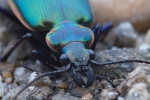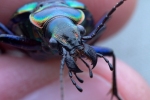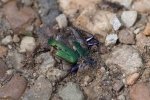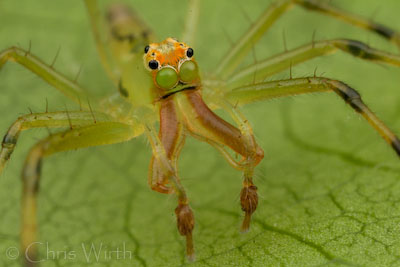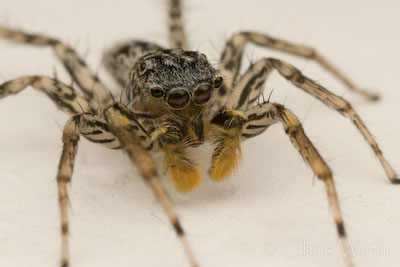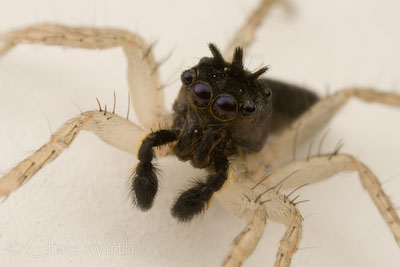Back at the end April I had a chance to escape from classes and get out into the field for a weekend of collecting and photography. The day was slightly cooler than anticipated but still productive; throughout the day I saw numerous Calosoma wilcoxi scuttling about. While smaller than its larger cousin C. scrutator, this species is still quite vividly colored – a striking combination of green, blue and some red edging.
The sheer number of beetle present was possibly the most surprising; I saw beetles running on the trunks of tress, on the road, and even, in copious amounts, in the leavings from a small mammal. This did make for many great, though at times frustrating, photographic opportunities.
Further information on Calosoma wilcoxi, C. scrutator, or on all of the species from Virginia.

